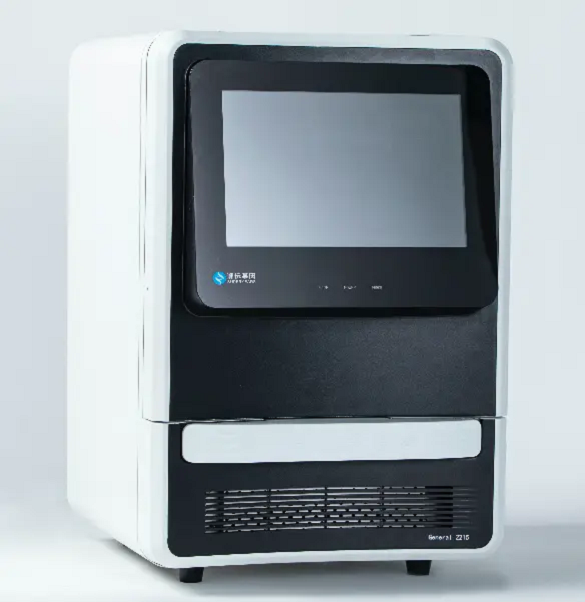RT-qPCR Instrument Display

When choosing a Real-Time Fluorescence Quantitative Pcr Instrument thermal cycler DNA test machine, it's essential to consider various factors to ensure that the selected instrument meets your specific needs and requirements. Here are some key considerations to guide the selection process:
1. Throughput Requirements: Consider the sample volume and throughput needs of your laboratory. Choose a real-time PCR thermal cycler that can accommodate the desired number of samples, whether you require a standard 96-well format or higher throughput options such as 384-well or 1536-well formats.
2. Assay Flexibility: Evaluate the instrument's compatibility with different assay formats, including probe-based assays, intercalating dye-based assays, multiplexing capabilities, and the number of detection channels available.
3. Detection Sensitivity and Specificity: Assess the instrument's detection sensitivity, dynamic range, and specificity to ensure it can reliably detect and quantify nucleic acids at the desired levels for your applications, such as gene expression analysis, pathogen detection, or viral load quantification.
4. Temperature Control and Uniformity: Consider the thermal cycling system's temperature range, uniformity, and ramp rates to ensure that it can support a wide range of PCR protocols and provide consistent and reproducible results.
5. Optical System: Evaluate the instrument's optical system, including excitation sources, detection technology, filters, and optics, to ensure it is compatible with the fluorophores used in your assays and offers efficient detection of fluorescence signals.
6. Software and Data Analysis: Assess the user interface, software capabilities, and data analysis tools provided with the instrument. Look for features such as intuitive software for instrument control, data visualization, export options, and compatibility with data analysis software.
7. Connectivity and Automation: Consider the instrument's connectivity options, including USB, Ethernet, and compatibility with robotic systems for automation. These features can streamline data transfer, instrument control, and integration with lab automation systems.
8. Manufacturer Support and Service: Evaluate the reputation of the instrument's manufacturer, including their track record in providing technical support, service, and availability of reagents, consumables, and spare parts.
9. Budget and Total Cost of Ownership: Consider the initial instrument cost, as well as ongoing costs such as consumables, maintenance, and service contracts. Assess the overall total cost of ownership to ensure it aligns with your budget and long-term operational needs.
10. User Feedback and Reviews: Seek input from other researchers, laboratory managers, and industry professionals who have experience with the specific real-time PCR thermal cycler models under consideration. User feedback and reviews can provide valuable insights into the performance, reliability, and user experience of the instruments.
By carefully considering these factors, you can select a Real Time Fluorescence Quantitative Pcr System thermal cycler DNA test machine that best suits your laboratory's needs and supports your specific applications and research goals. It's important to thoroughly evaluate the specifications, capabilities, and user feedback of potential instruments before making a purchase decision.






